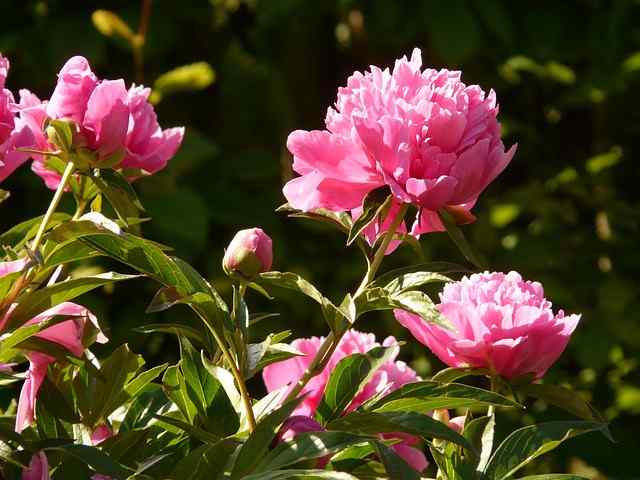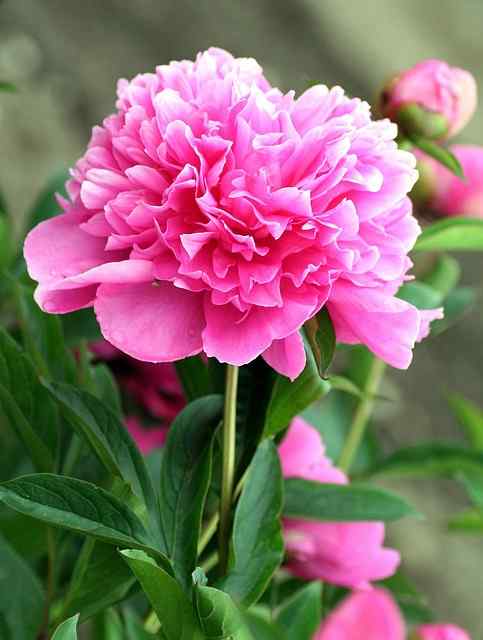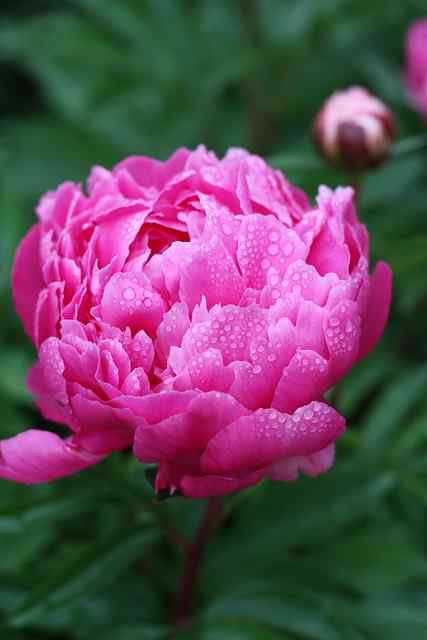Do peonies need full sun? We’ll cover everything from their growth habits to optimal growing conditions, ensuring you have all the information to cultivate these beautiful plants successfully.
Peonies and Sunlight: What They Really Need

When it comes to sunlight, peonies do have specific preferences, which can significantly impact their growth and blooming. Generally, peonies thrive best in full sun, which typically means receiving a minimum of six hours of direct sunlight each day. However, there’s more to the story.
Full Sun Requirements
Optimal Growth: Full sun conditions are crucial for peonies to grow robustly and bloom profusely. Adequate sunlight helps peonies photosynthesize effectively, leading to healthy foliage and vibrant flowers.
Flowering Potential: Without enough sunlight, peonies may produce fewer blooms or show weak, leggy growth. Full sunlight encourages the production of plant hormones that promote flowering, leading to the stunning displays gardeners cherish.
Sun Exposure in Different Regions: Consider your geographical location. In cooler climates, peonies benefit immensely from full sun exposure, while in hotter areas, they may require some afternoon shade to prevent heat stress. It’s important to assess your local climate when determining the right amount of sun for your peonies.
The Role of Partial Sun
While full sun is ideal, peonies can adapt to some degree of partial sun—typically categorized as receiving about four to six hours of direct sunlight. Here’s when and why you might consider partial sun for your peonies:
Heat Protection: In regions where summer temperatures soar with relentless sun, peonies may struggle. Providing afternoon shade can help protect their delicate foliage and prevent wilting or burnout.
Prevention of Fungal Diseases: Sometimes, too much sun, coupled with humidity, can lead to fungal issues. Especially in more tropical climates, a little shade can help cutoff the conditions that promote diseases such as botrytis blight.
Extended Bloom Time: Some gardeners report that peonies exposed to partial sun may have longer-lasting blooms. While the quantity might be slightly reduced, the quality and duration can be enhanced, giving you more time to admire their beauty.
Soil and Water Considerations: The Sunlight Connection

Another aspect closely tied to a peony’s light requirements is its growing environment, particularly soil and water. Ensuring you have the right conditions will complement their need for sunlight beautifully.
Soil Requirements
Well-draining Soil: Peonies prefer rich, well-draining soil. Heavy, compacted soil can lead to root rot—a real threat if the peonies are subjected to excessive moisture after rains. Enriching your soil with organic matter, like compost, can help create the ideal conditions for peony roots.
pH Balance: Peonies thrive in slightly acidic to neutral pH levels, around 6.0 to 7.0. Testing your soil’s pH can inform whether you need to amend it to meet peony requirements. Plants that are well suited to their soil thrive better in sunlight and produce more bountiful blooms.
Water Requirements
Consistent Moisture: Peonies require consistent watering, especially during dry periods. Although they don’t like to sit in water, they dislike drought, which can cause stress on the plant, leading to poor growth and weaker blooms.
Watering Schedule: Early mornings are ideal for watering to allow time for the foliage to dry, thus preventing fungal diseases. Keeping your watering consistent, especially during their growth phase, helps them make the most of the sun they receive.
The Ideal Location: Finding the Right Spot for Your Peonies

Choosing the right location for your peonies can make or break your gardening success. Here are some tips for selecting the perfect spot:
Sunlight Assessment
Observe Patterns: During various times of the year, take note of your yard and how sunlight moves throughout the day. Identify spots that receive ample sunlight and any areas that become shady during peak hours.
Avoid Competition: Choose a location that minimizes competition from other plants and trees, as these can block essential sunlight and restrict airflow around your peonies.
Microclimates
Understanding Your Garden’s Unique Conditions: Some areas in your garden may have unique microclimates affected by wind, rainfall, or even temperature variations. Identifying these microclimates can help you choose the best location for your peonies based on their sunlight needs.
Benefits of Raised Beds: Sometimes, building raised beds can improve drainage and create ideal sun exposure situations for plants. If natural sunlight is an issue in your yard, consider installing raised beds to maximize the conditions for peonies.
Caring for Peonies in Various Light Conditions

Once you’ve established whether to plant your peonies in full sun or partial sun, understanding how to care for them in those conditions is essential.
Fertilization Needs
Balanced Fertilizers: Use a balanced fertilizer in early spring as peonies start to grow. A well-balanced fertilizer supports root development, which is crucial for thriving blooms under the sun.
Organic Options: Organic fertilizers can optimize healthy growth and overall plant health. They are less likely to burn the delicate roots of young peonies and offer long-term benefits to soil health.
Pruning and Maintenance
Cut Back in the Fall: After the foliage has died back in late fall, cut the stems down to the ground. This practice encourages healthy new growth in the spring and helps prevent disease.
Staking: In some instances, particularly with taller varieties, staking may be necessary to support heavy blooms. Be cautious with placement since strong sunlight can cause branches to easily break if not adequately supported.
Common Peony Problems Related to Sunlight

While peonies are generally hardy, they can encounter challenges related to their light exposure. Being aware of potential issues can help you tackle them early.
Legginess in Partial Sun
If your peonies are showing increased leggy growth, it’s likely they are not receiving enough sunlight. Legginess means the stems stretch toward light, becoming elongated and weaker. If you notice this, consider relocating them to a sunnier spot or trimming them back slightly to encourage bushier growth.
Fungal Issues
As previously mentioned, high humidity and shaded areas can lead to fungal issues, primarily botrytis blight. Observe any discoloration or wilting, especially after heavy rainfall. Proper air circulation, adequate light, and careful watering can mitigate the risk of these diseases.
Timing Your Peony Planting

Timing is essential when planting peonies, especially concerning their light requirements.
Best Planting Time
Fall Planting: The ideal time for planting peonies is in the fall, allowing them to establish roots before winter. This also prepares them for the vigorous growth they’ll undertake in spring, benefiting from the increasing sunlight.
Spring Planting: Although spring planting is possible, it’s critical to wait until the danger of frost has passed. Peonies that are planted too late in spring may fail to establish themselves properly, which can hinder their ability to absorb sunlight effectively through the upcoming growing season.
Conclusion: Final Thoughts on Peonies and Sunlight
So, do peonies need full sun? The short answer is: yes, they thrive best in it. However, with the right care and conditions, they can also adapt to partial sunlight. Understanding your local climate, soil conditions, and the specific needs of your peonies will empower you to grow an impressive display of these stunning blooms.





